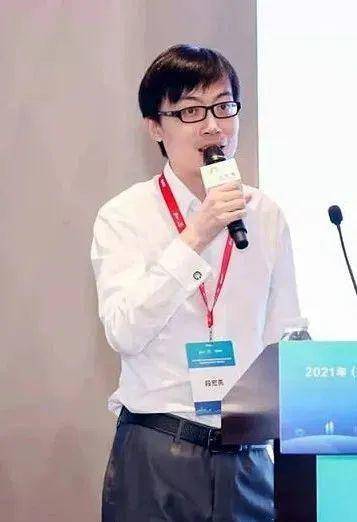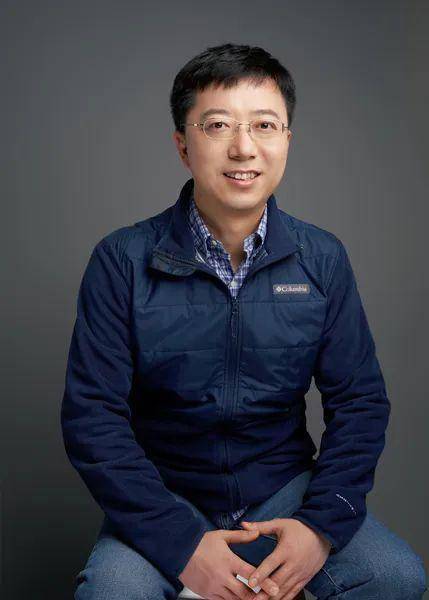 Technology peripherals
Technology peripherals
 AI
AI
 Lecture Reservation|Five experts discussed: How does AI large model affect the research and development of new drugs under the wave of new technologies?
Lecture Reservation|Five experts discussed: How does AI large model affect the research and development of new drugs under the wave of new technologies?
Lecture Reservation|Five experts discussed: How does AI large model affect the research and development of new drugs under the wave of new technologies?
In 1978, Stuart Marson and others from the University of California established the world's first CADD commercial company and pioneered the development of a chemical reaction and database retrieval system.
Since then, computer-aided drug design (CADD) has entered an era of rapid development and has become one of the important means for pharmaceutical companies to conduct drug research and development, bringing revolutionary upgrades to this field.
On October 5, 1981, Fortune magazine published a cover article titled "The Next Industrial Revolution: Merck Designs Drugs Through Computers," officially announcing the advent of CADD technology.
In 1996, the first carbonic anhydrase inhibitor, a drug developed based on SBDD (structure-based drug design), was successfully launched, and the importance of CADD in drug research and development was also verified.
In the following decades, structure-driven CADD has been an effective method for drug screening.
At the same time, the rise of structural biology, genomics, proteomics, bioinformatics and other technologies is also promoting the development of CADD.
Until the gradual rise of AI technology in recent years, traditional CADD technology has continued to evolve and enter an advanced stage - data-driven AIDD (Artificial Intelligence Drug Discovery and Design).
In 2020, a drug developed by British company Exscientia based on AI was approved to enter clinical trials. This is the world's first molecule designed by AI to enter the clinical stage, becoming a major milestone in the field of AI pharmaceuticals.
2020 has also become the first year for the outbreak of domestic AI pharmaceutical financing. A total of 12 financing events occurred throughout the year, with a total amount of more than 2.7 billion yuan, a year-on-year increase of approximately 10 times.
In the next two to three years, with the rapid development of artificial intelligence, drug research and development has gone from being unnoticed in the past to attracting much attention now. As of 2022, there have been 144 financings related to the global AI pharmaceutical industry, with a total amount of more than US$6 billion.
Since the establishment of the world's first AI pharmaceutical company in 2012, AIDD has gone through 10 years of industrialization.
As the haze of the epidemic gradually dissipates, the AI pharmaceutical industry has gradually entered a cooling period. The topic of AI pharmaceuticals seems to have returned to the craze two or three years ago. This is due to the rapid rise of large AI models.
As a powerful tool in the era of artificial intelligence, what kind of storm will AI large models set off in the pharmaceutical industry?
How can AI technology break through the bottleneck of traditional drug research and development and bring drugs to the market faster?
Can AI pharmaceuticals become an opportunity for domestic drug innovation and overtaking in corners?
In order to discuss more deeply and systematically the many problems faced by domestic pharmaceutical companies in the research and development of new drugs, Leifeng.com will hold a conference with the theme of "Human-Machine Collaboration" from 8 to 10 pm on June 8. New Drug Research and Development” online roundtable forum.
This forum will be hosted by Xie Changyu, a professor at Zhejiang University School of Pharmacy, Liu Zhenming, a researcher at Peking University School of Pharmacy, Liu Wei, head of AIDD technology at Tencent Healthcare, Duan Hongliang, dean of Zhejiang University of Technology Intelligent Pharmaceutical Research Institute, and Tsinghua University Intelligent Industry Research Zhang Yu, Director of the Strategic Development and Cooperation Department of the Academy, participated in the discussion.
Readers can scan the QR code on the poster at the bottom of the article to enter the expert community. We will collect and summarize your questions, feed them back to the guests, and answer them during the discussion session.
Guest introduction

Moderator: Xie Changyu, Professor, School of Pharmacy, Zhejiang University
Professor of the School of Pharmacy, Zhejiang University, Professor of Qiushi Engineering, a scholar with dual backgrounds in quantum physics and artificial intelligence, focusing on cutting-edge algorithm research in small molecule drug design.
Professor Xie Changyu graduated from the University of Toronto in 2006 with a bachelor's degree in engineering physics. He received a doctorate in science from the University of Ottawa in 2012 and is engaged in quantum computing research at the Canadian National Research Institute. This was followed by postdoctoral research in theoretical chemistry and open quantum systems, at the University of Toronto and MIT, respectively. In 2018, Professor Xie Changyu joined the newly established Quantum Laboratory at Tencent and led a theory and algorithm team to explore the application of cutting-edge computing technologies (such as quantum computing and artificial intelligence) in the field of natural sciences, including the design of drugs and organic materials. From September 2022 to present, Professor Xie Changyu has joined the School of Pharmacy, Zhejiang University.
In the past five years, Professor Xie Changyu has published many AI articles in high-level international journals such as Nat. Mach. Intell., Nat. Commun., J. Med. Chem., Phys. Rev. Lett., Chem. Sci., etc. He has published nearly 40 papers related to pharmaceuticals and quantum computing. Won the 24th China Patent Award - Silver Award.

Liu Zhenming, researcher at Peking University School of Pharmacy
This scientist is my country’s expert in the research and development of innovative anti-tumor drugs and AIDD. He is also the person in charge of the Peking University Branch of the National Compound Resource Library. The current research direction is medicinal chemistry and drug design.
Professor Liu Zhenming graduated from Peking University School of Pharmacy in 2000 with a bachelor's degree in medicinal chemistry. He received a doctorate in physical chemistry from Peking University School of Chemistry and Molecular Engineering in 2005. In the same year, he joined Peking University School of Pharmacy to teach.
As the project leader and main member, Professor Liu has participated in and completed 21 national scientific research projects including the National Natural Science Foundation, 863 Program, National Science and Technology Major Projects, National Science and Technology Key R&D Plan, Beijing Natural Science Foundation, etc. . In the past five years, he has published more than 70 research papers in major domestic and foreign academic journals, presided over and participated in the preparation of 5 textbooks and monographs, applied for and obtained 5 Chinese invention patents, and more than 10 computer software copyright certificates. He has published 10 related papers on drug molecule design and protein function research, and all of these papers have been included in SCI.

Liu Wei, Head of Tencent Healthcare AIDD Technology
Tencent Healthcare AIDD technical leader. Since joining Tencent in 2017, he has been responsible for the research and development work related to medical artificial intelligence applications. In 2019, he began to focus on the development of Tencent's AIDD technology platform, which currently covers the main preclinical research stages of small molecule and large molecule drug design; during this period, he has won multiple awards First prize in international and domestic AI competitions.
Before joining Tencent, Liu Wei was mainly engaged in the application of machine learning in various scenarios such as Internet search and advertising. He was one of the first engineers in China to engage in machine learning applications.

Duan Hongliang, Dean of Zhejiang University of Technology Intelligent Pharmaceutical Research Institute
Professor of Zhejiang University of Technology and Dean of Zhejiang University of Technology Intelligent Pharmaceutical Research Institute. He is mainly engaged in AI drug research. In view of the "pain point" of serious lack of data in AI drug research and development, he pioneered the use of drug big data obtained by HTS and Combining AI technology, we are committed to establishing a drug development platform based on "HTS AI" dual-drive technology, focusing on the intelligent and streamlined discovery of preclinical candidate compounds.
Professor Duan Hongliang received a PhD in medicinal chemistry from the Shanghai Institute of Materia Medica, Chinese Academy of Sciences, and a master's degree in artificial intelligence from Homer University in Ohio, USA. Professor Duan has been engaged in the development of new drugs based on high-throughput screening (HTS) at the Oklahoma Medical Foundation in the United States for many years. The anti-diabetic drug developed as a core member was transferred to the French Servier Pharmaceutical Company for 200 million yuan.
Professor Duan Hongliang has published dozens of high-end SCI-indexed papers. The anti-diabetic drugs developed as a core member were transferred to foreign pharmaceutical companies for 200 million yuan. The three first-class new drugs developed as a main member are now in the clinical research stage.

Zhang Yu, Director of Strategic Development and Cooperation Department, Tsinghua University Intelligent Industry Research Institute
Assistant to the dean of Tsinghua University Intelligent Industry Research Institute and director of the Strategic Development and Cooperation Department.
Director Zhang Yu received his bachelor's and master's degrees from the Department of Electronic Engineering of Tsinghua University and his doctorate in management from Beijing Institute of Technology. He has worked for Microsoft for more than 15 years and served as Microsoft Asia Pacific Education Cooperation Manager, Education Industry Manager, and Government Industry Director. , assistant to the chairman of Microsoft Asia Pacific R&D Group, etc. In addition, he also served as chairman of Rongquan Holdings (China) Group, executive director of Hailan Holdings, and vice president of Tianyang Holdings Group.
During his tenure at Microsoft, Director Zhang Yu received many awards and honors from Microsoft, including Microsoft's Top Attainment Award and the company's Circle of Excellence Platinum Award.
Director Zhang Yu has researched in many fields and has won the "King's Choice" Science and Technology Award, the "Best Creative Award" of the "Challenge Cup" National College and Middle School Student Theme Design Competition, the First Prize of Beijing Good News, and the National Excellent Education Award He has won many awards such as worker, and also serves as a visiting professor at many universities and a development consultant for many provinces and cities.
Lecture Information
Topic: New drug research and development under the "human-machine collaboration" model
Time: June 8, 20:00-22:00 Beijing time
Organizer: Leifeng.com GAIR Live & "Medical Health AI Nuggets"
How to watch & join the expert group:
Readers can scan the QR code on the poster at the bottom of the article, add the planner Wu Tong on WeChat (WeChat ID: icedaguniang), and note "name and position" to join the expert group, watch this online forum, and communicate and ask questions in real time .
About GAIR Live
The "Global Conference on Artificial Intelligence and Robotics" (GAIR) began in 2016 as the CCF-GAIR Conference co-founded by Leifeng.com and the China Computer Federation (CCF). It aims to create a connection between academia and industry under the wave of artificial intelligence. , a new platform for the investment community, and Leifeng.com’s new positioning of “connecting the three worlds” was also established at this conference.
After several years of development, the GAIR Conference has become an industry benchmark. It is by far the largest, highest-level, and most comprehensive academic, industrial and investment event in the field of artificial intelligence in the Guangdong-Hong Kong-Macao Greater Bay Area.
GAIR Live, as a live video brand under Leifeng.com, aims to output fresh, in-depth and original celebrity interviews and dialogue content, and create a unique online platform that radiates industry, learning, research and investment.
The above is the detailed content of Lecture Reservation|Five experts discussed: How does AI large model affect the research and development of new drugs under the wave of new technologies?. For more information, please follow other related articles on the PHP Chinese website!

Hot AI Tools

Undresser.AI Undress
AI-powered app for creating realistic nude photos

AI Clothes Remover
Online AI tool for removing clothes from photos.

Undress AI Tool
Undress images for free

Clothoff.io
AI clothes remover

Video Face Swap
Swap faces in any video effortlessly with our completely free AI face swap tool!

Hot Article

Hot Tools

Notepad++7.3.1
Easy-to-use and free code editor

SublimeText3 Chinese version
Chinese version, very easy to use

Zend Studio 13.0.1
Powerful PHP integrated development environment

Dreamweaver CS6
Visual web development tools

SublimeText3 Mac version
God-level code editing software (SublimeText3)

Hot Topics
 Large AI models are very expensive and only big companies and the super rich can play them successfully
Apr 15, 2023 pm 07:34 PM
Large AI models are very expensive and only big companies and the super rich can play them successfully
Apr 15, 2023 pm 07:34 PM
The ChatGPT fire has led to another wave of AI craze. However, the industry generally believes that when AI enters the era of large models, only large companies and super-rich companies can afford AI, because the creation of large AI models is very expensive. The first is that it is computationally expensive. Avi Goldfarb, a marketing professor at the University of Toronto, said: "If you want to start a company, develop a large language model yourself, and calculate it yourself, the cost is too high. OpenAI is very expensive, costing billions of dollars." Rental computing certainly will It's much cheaper, but companies still have to pay expensive fees to AWS and other companies. Secondly, data is expensive. Training models requires massive amounts of data, sometimes the data is readily available and sometimes not. Data like CommonCrawl and LAION can be free
 How to build an AI-oriented data governance system?
Apr 12, 2024 pm 02:31 PM
How to build an AI-oriented data governance system?
Apr 12, 2024 pm 02:31 PM
In recent years, with the emergence of new technology models, the polishing of the value of application scenarios in various industries and the improvement of product effects due to the accumulation of massive data, artificial intelligence applications have radiated from fields such as consumption and the Internet to traditional industries such as manufacturing, energy, and electricity. The maturity of artificial intelligence technology and application in enterprises in various industries in the main links of economic production activities such as design, procurement, production, management, and sales is constantly improving, accelerating the implementation and coverage of artificial intelligence in all links, and gradually integrating it with the main business , in order to improve industrial status or optimize operating efficiency, and further expand its own advantages. The large-scale implementation of innovative applications of artificial intelligence technology has promoted the vigorous development of the big data intelligence market, and also injected market vitality into the underlying data governance services. With big data, cloud computing and computing
 Popular science: What is an AI large model?
Jun 29, 2023 am 08:37 AM
Popular science: What is an AI large model?
Jun 29, 2023 am 08:37 AM
AI large models refer to artificial intelligence models trained using large-scale data and powerful computing power. These models usually have a high degree of accuracy and generalization capabilities and can be applied to various fields such as natural language processing, image recognition, speech recognition, etc. The training of large AI models requires a large amount of data and computing resources, and it is usually necessary to use a distributed computing framework to accelerate the training process. The training process of these models is very complex and requires in-depth research and optimization of data distribution, feature selection, model structure, etc. AI large models have a wide range of applications and can be used in various scenarios, such as smart customer service, smart homes, autonomous driving, etc. In these applications, AI large models can help people complete various tasks more quickly and accurately, and improve work efficiency.
 In the era of large AI models, new data storage bases promote the digital intelligence transition of education, scientific research
Jul 21, 2023 pm 09:53 PM
In the era of large AI models, new data storage bases promote the digital intelligence transition of education, scientific research
Jul 21, 2023 pm 09:53 PM
Generative AI (AIGC) has opened a new era of generalization of artificial intelligence. The competition around large models has become spectacular. Computing infrastructure is the primary focus of competition, and the awakening of power has increasingly become an industry consensus. In the new era, large models are moving from single-modality to multi-modality, the size of parameters and training data sets is growing exponentially, and massive unstructured data requires the support of high-performance mixed load capabilities; at the same time, data-intensive The new paradigm is gaining popularity, and application scenarios such as supercomputing and high-performance computing (HPC) are moving in depth. Existing data storage bases are no longer able to meet the ever-upgrading needs. If computing power, algorithms, and data are the "troika" driving the development of artificial intelligence, then in the context of huge changes in the external environment, the three urgently need to regain dynamic
 Vivo launches self-developed general-purpose AI model - Blue Heart Model
Nov 01, 2023 pm 02:37 PM
Vivo launches self-developed general-purpose AI model - Blue Heart Model
Nov 01, 2023 pm 02:37 PM
Vivo released its self-developed general artificial intelligence large model matrix - the Blue Heart Model at the 2023 Developer Conference on November 1. Vivo announced that the Blue Heart Model will launch 5 models with different parameter levels, respectively. It contains three levels of parameters: billion, tens of billions, and hundreds of billions, covering core scenarios, and its model capabilities are in a leading position in the industry. Vivo believes that a good self-developed large model needs to meet the following five requirements: large scale, comprehensive functions, powerful algorithms, safe and reliable, independent evolution, and widely open source. The rewritten content is as follows: Among them, the first is Lanxin Big Model 7B, this is a 7 billion level model designed to provide dual services for mobile phones and the cloud. Vivo said that this model can be used in fields such as language understanding and text creation.
 Five new technology trends in 2022
Apr 08, 2023 pm 09:51 PM
Five new technology trends in 2022
Apr 08, 2023 pm 09:51 PM
Today, there are many emerging technology trends serving businesses. As a businessman, it is very necessary to be aware of new trends as it can be a boost to the company. With this information, we can easily upgrade our company and make it easy for potential customers to contact us. Additionally, the latest technology trends enable businesses to stay relevant in the technology world. From 3D printing to eliminating hackers through cybersecurity, it’s critical to adopt these technology trends so your business can grow and retain customers. Here are the top 5 new technology trends in 2022 that can help your business grow significantly. 1. Artificial Intelligence and Machine Learning Although artificial intelligence became popular a few years ago, it is not slowing down. It continues to evolve and become top technology in 2022. For example, today some popular
 With reference to the human brain, will learning to forget make large AI models better?
Mar 12, 2024 pm 02:43 PM
With reference to the human brain, will learning to forget make large AI models better?
Mar 12, 2024 pm 02:43 PM
Recently, a team of computer scientists developed a more flexible and resilient machine learning model with the ability to periodically forget known information, a feature not found in existing large-scale language models. Actual measurements show that in many cases, the "forgetting method" is very efficient in training, and the forgetting model will perform better. Jea Kwon, an AI engineer at the Institute for Basic Science in Korea, said the new research means significant progress in the field of AI. The "forgetting method" training efficiency is very high. Most of the current mainstream AI language engines use artificial neural network technology. Each "neuron" in this network structure is actually a mathematical function. They are connected to each other to receive and transmit information.
 Lecture Reservation|Five experts discussed: How does AI large model affect the research and development of new drugs under the wave of new technologies?
Jun 08, 2023 am 11:27 AM
Lecture Reservation|Five experts discussed: How does AI large model affect the research and development of new drugs under the wave of new technologies?
Jun 08, 2023 am 11:27 AM
In 1978, Stuart Marson and others from the University of California established the world's first CADD commercial company and pioneered the development of a chemical reaction and database retrieval system. Since then, computer-aided drug design (CADD) has entered an era of rapid development and has become one of the important means for pharmaceutical companies to conduct drug research and development, bringing revolutionary upgrades to this field. On October 5, 1981, Fortune magazine published a cover article titled "The Next Industrial Revolution: Merck Designs Drugs Through Computers," officially announcing the advent of CADD technology. In 1996, the first drug carbonic anhydrase inhibitor developed based on SBDD (structure-based drug design) was successfully launched on the market. CADD was widely used in drug research and development.





